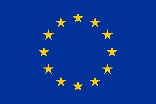
European Commission proposes new strategy to protect and restore forests
On 16th July, the European Commission adopted the New EU Forest Strategy for 2030, an emblematic initiative of the European Green Deal that builds on the EU Biodiversity Strategy for 2030.
The strategy contributes to the package of measures proposed to achieve greenhouse gas emission reductions of at least 55% by 2030 and climate neutrality in 2050 in the EU. It also helps the EU deliver on its commitment to enhancing carbon removals by natural sinks as per the Climate Law. By addressing the social, economic and environmental aspects altogether, the Forest Strategy aims at ensuring the multifunctionality of EU forests and highlights the pivotal role played by foresters.
“European forests are a valuable natural heritage that cannot be taken for granted. Protecting, restoring and building up the resilience of European forests is not only essential to fight the climate and biodiversity crises, but also to preserve the socio-economic functions of forests. The huge involvement in public consultations shows that Europeans care about the future of our forests, so we must change the way we protect, manage and grow our forests that it would bring real benefits for all.” stated Commissioner for Environment, Oceans and Fisheries, Virginijus Sinkevičius.
The strategy is accompanied by a Roadmap for planting three billion additional trees across Europe by 2030 in full respect of ecological principles – the right tree in the right place for the right purpose.
Protection, restoration and sustainable management of forests
The Forest Strategy sets a vision and concrete actions for increasing the quantity and quality of forests in the EU and strengthening their protection, restoration, and resilience. The proposed actions will increase carbon sequestration through enhanced sinks and stocks thus contributing to climate change mitigation. The Strategy commits to strictly protecting primary and old-growth forests, restoring degraded forests, and ensuring they are managed sustainably – in a way that preserves the vital ecosystem services that forests provide and on which society depends.
The Strategy promotes the most climate and biodiversity-friendly forest management practices, emphasises the need to keep the use of woody biomass within sustainability boundaries, and encourages resource-efficient wood use in line with the cascade principle.
Ensuring the multifunctionality of EU forests
The Strategy also foresees the development of payment schemes to forest owners and managers for providing alternative ecosystems services, e.g. through keeping parts of their forests intact. The new Common Agricultural Policy (CAP), amongst others, will be an opportunity for more targeted support to foresters and to the sustainable development of forests. The new governance structure for forests will create a more inclusive space for Member States, forest owners and managers, industry, academia and civil society to discuss about the future of forests in the EU and help maintain these valuable assets for the generations to come.
Finally, the Forest Strategy announces a legal proposal to step up forest monitoring, reporting and data collection in the EU. Harmonised EU data collection, combined with strategic planning at Members States' level, will provide a comprehensive picture of the state, the evolution and the envisaged future developments of forests in the EU. This is paramount to making sure that forests can deliver on their multiple functions for climate, biodiversity and economy.
Source: https://ec.europa.eu/

